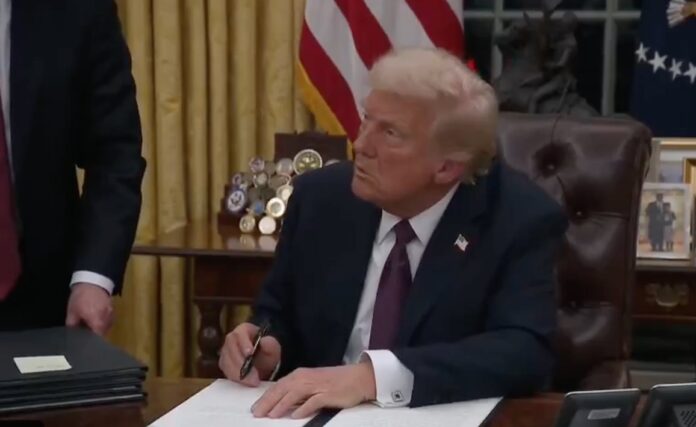By PEDRO GONZALEZ
A curious ballet around the Alaska LNG Project has been unfolding on the international stage with some of America’s allies in Asia.
It’s raising questions about whether the pipeline will at last find the funding that it needs after so much song and dance. It is a story some four decades long. The difference now, though, is that President Donald Trump is showing potential investors abroad both the carrot and the stick, i.e., the threat of tariffs.
Early into his administration, the president began to pressure Asian countries into exploring Alaska’s ample energy reserves. Whether the approach will bear fruit is yet to be determined.
Last week, the Ministry of Energy of Thailand asked two major energy companies, Ego and PTT, to engage the United States in discussions about LNG development in Alaska.
Assuming Thailand commits to investing in gas exploration and production, the country could import between 3 Mt/year and 5 Mt/year of LNG through the proposed 800-mile pipeline. But that might be assuming a lot.
In March, the Taiwanese state-owned CPC Corporation entered into an agreement with the administration of Gov. Mike Dunleavy to buy Alaskan LNG if the pipeline ever gets built. “It is a bridge connecting the future prosperity of both Alaska and Taiwan,” Dunleavy said.
That, however, could be a big “if,” and the fine print is notable.
What Taiwan actually inked was a non-binding letter of support. That is far from anything like a concrete commitment to the completion of the beleaguered LNG project.
Japan and South Korea have also joined Taiwan and Thailand in exploring potential investment opportunities in the $44 billion natural gas project.
Many of these countries could indeed benefit from buying Alaskan fuel, as it would likely be cheaper than acquiring it from other sources, like those in the Middle East. Such a collaborative endeavor would also be consistent with Trump’s broader energy agenda.
The issue of commitment, or a lack thereof, remains. South Korea’s Industry Minister Ahn Duk-geun has merely agreed to establish a “working-level group” to discuss the project, which has spooked investors for nearly as long as Alaska has been part of the Union.
However, all that could change in June, when the Trump administration’s National Energy Dominance Council will hold a summit in Anchorage with the LNG project as the centerpiece. Delegations from both Japan and Korea will be present.
The main reservations of potential Asian partners with regard to a long-term commitment will likely center on the pipeline’s big price tag and its sustainability. Japan recently reaffirmed its goal of aggressively expanding its nuclear power capabilities by 2030.
“We can use renewable power to the maximum, and we will restart nuclear power, the safe one, as much as possible,” Japanese Industry Minister Yoji Muto told reporters late last year.
South Korea has likewise made huge investments in nuclear power with a $100 million financial pledge in February to businesses in the sector. Just this week, Taiwan announced that it would restart its atomic plants in a major energy policy shift that indicates growing concerns over geopolitical instability.
A long-term commitment to developing and importing Alaskan LNG might not make a great deal of sense to countries that plan on leaning into nuclear power in the near future. So the question is whether the Trump administration thinks it can convince them that there is more to gain than lose from buying American.
Pedro Gonzalez writes news and opinion at Must Read Alaska.

Can somebody please explain to me why it’s better for the Thais to own a gas pipeline in Alaska than the Canadians? (“Canada my —…….it’s Alaska’s gas……..”)
Better for whom?
The author writes: “Many of these countries could indeed benefit from buying Alaskan fuel, as it would likely be cheaper than acquiring it from other sources, like those in the Middle East.”
Seriously? This statement will require a whole lotta evidence to convince me that it is true. Bringing North Slope gas to market is just about the most expensive proposition imaginable. The only advantage that NS gas can offer is stability.